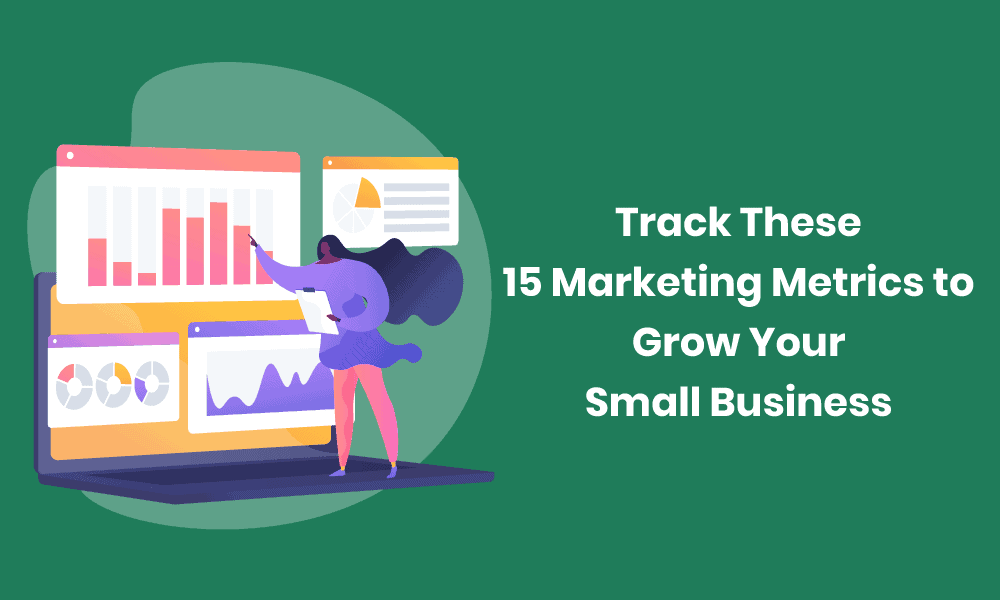Feedback is the catalyst for improvement.
Be it in sports, public speaking, digital marketing, or photography, the habit of seeking feedback and acting on this wealth of information works wonders.
Digital marketing encompasses a myriad of activities from social media management to lead generation and cold emailing.
Unless you get real-time feedback on the effectiveness of your activities, progress is unmeasurable.
Moreover, in the absence of feedback, you never know if you are headed in the right direction.
For all you know, you could be wasting your time and energy on the wrong things.
Table of Contents
What are marketing metrics
Marketing Metrics, also known as Marketing Key Performance Indicators (KPIs), refer to measurable values that highlight the effectiveness of any given campaign across marketing channels.
Marketing metrics are essential indicators of the extent to which your marketing efforts are paying off.
In a nutshell, marketing metrics help analyze the efforts vs. results both quantitatively and qualitatively.
Consequently, marketing teams make better decisions, resulting in elevated levels of productivity and profitability.
Such CRM metrics are vital for marketing teams to tweak changes in their strategies to attain the desired results.
Why Are Metrics Important?
Marketing metrics exist for a reason.
89% of marketers use marketing metrics like market share or CLV, and gross revenue, to measure the effectiveness of the campaign.
Marketing metrics are a great way to keep track of all your marketing efforts and its result. Yet, many small businesses still don’t track their metrics.
Let’s look at some of the reasons why every company should track marketing metrics.
Creates a Competitive Advantage
As mentioned earlier, not every company is tracking metrics. Most companies do not have the bandwidth to measure marketing performance systematically.
And if they do, they lack an apparent set of skills and experience to use marketing metrics to their advantage.
When you measure the right marketing metrics and take actions accordingly, it increases the chance of success.
Increases ROI (Return on Investment)
The idea is straightforward here. If you can’t measure something, you can’t understand it.

Without understanding, how will you control your campaign and improve it?
Marketing metrics, when measured correctly, can result in a high return on investment. In other words, it reveals the truth about the overall performance of your organization.
Grows Faster
When you are able to measure your performance, you can improve it further.
Plus, competitive advantage and a better ROI will undoubtedly help your business grow faster than you would have otherwise.
Aligns Your Campaign Goals With Organizational Goals
Marketing metrics are essential because it ensures the alignment of your campaign goals with organizational goals.
It helps employees become aware of what’s essential to the business by showing what the business is being measured against.
Read also: Master the Art of Small Business Growth: An 8-Step Journey to Success
How Marketing Metrics Help Digital Marketing Campaigns
A digital marketing campaign refers to a company’s online marketing efforts to drive traffic, conversions, engagement, or revenue.
Effective campaigns are the ones that always align with the company’s goals.
A typical campaign consists of planning, development, and management, and development.
The planning stage consists of:
- Outlining goals
- Identifying target customers
- Defining target length
The development stage includes:
- Picking a strategy
- Selecting target keywords
- Reaching the audience
- Determining campaign location
- Making marketing decisions
- Channel integration
- Ensuring consistency
The management stage revolves around determining the value and success of the campaign.
In each of these stages, there are tons of decisions to be made. This is where marketing metrics are ultra-useful.
With digital metrics and KPIs, you no longer have to be in the dark regarding important decisions. You can act with authority and justify your decision making with utmost accuracy.
While planning out a campaign, marketing metrics and the resultant insights gained help make more sound marketing decisions.
For instance, a consumer’s demographics or a high bounce rate are pieces of valuable information.
You can then act on this data by altering some aspects of your campaign to get optimum results.
Read also: Read also: Multichannel Retailing: Everything You Need to Know
Marketing Metrics: A Practical Example
Take our company, for example. Assume that EngageBay is working on a secret mission to roll out a brand new blog.
Like any other service, setting up a blog, creating content and optimization takes up time and money.
Here’s a sample content marketing dashboard:
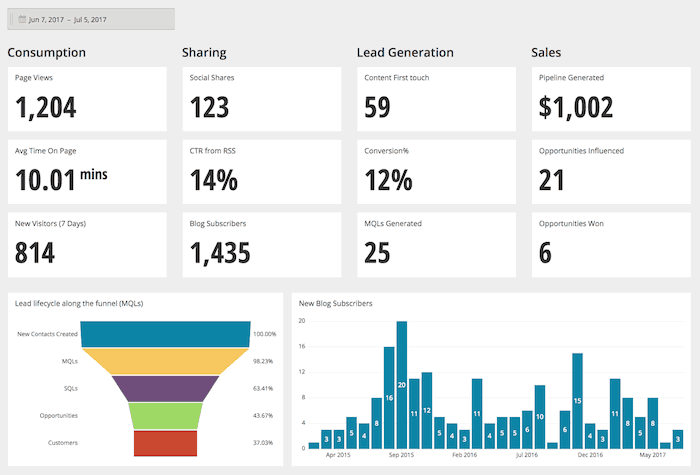
Now, to ensure that the content reaches the right people and is indeed making a difference, the marketing team harnesses specific marketing metrics:
- Blog Visits
- Breakdown of traffic source
- Visits to Blog Homepage
- Most Viewed Posts
- Average Views across posts
- Bounce Rate
There are tons of other parameters, but you get the point.
Gathering and analyzing the above parameters or metrics helps redirect and stay focused on the primary objectives.
This feedback enables the marketing team to brainstorm for better blog post ideas and thus, expand their reach. Consequently, the traffic increases and lead generation takes place.
As a result, hopefully, the leads get converted to clients and begin generating revenue.
Now, these metrics apply to the blogging platform. Similarly, several other metrics deliver essential information relevant to other platforms.

3 Reasons Why Marketing Metrics Are More Than Just Numbers
- 1. Deal with Unpredictability
- 2. Increased Intelligence
- 3. Justification of Marketing Spend
Well, it isn’t just numbers and figures. The significance is much more:
1. Deal with Unpredictability
Markets in any domain are seldom predictable. The next big thing is always around the corner.
You never know when or in what form disruptions may arise.
Effective usage of metrics helps overcome the enormous obstacle of unpredictability.
You could go live with some random campaign and hope for the best.
Or, use insights gained from marketing metrics to efficiently and strategically plan out a campaign that has a higher probability of success.
Create and execute meaningful marketing campaigns with the help of EngageBay marketing automation tool.
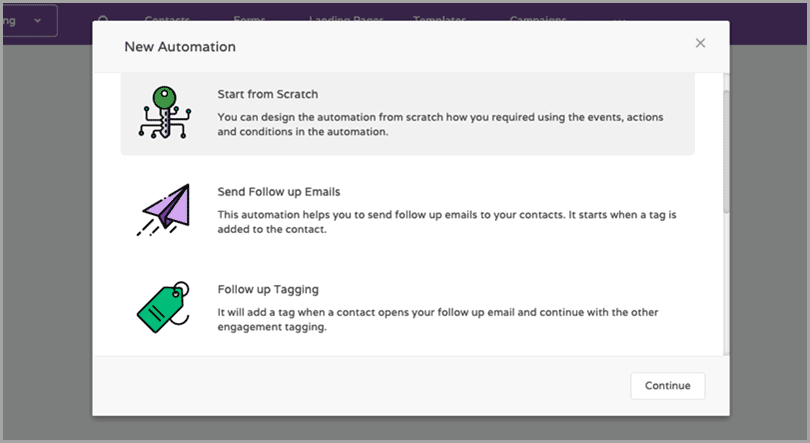
2. Increased Intelligence
If you analyze, evaluate, monitor, and act upon the performance metrics, your competitive intelligence substantially increases.
Moreover, you begin assessing your weaknesses and strengths. Additionally, you gain valuable insights, enabling you to make sound budgetary decisions.
Better decisions translate to better success and ROI.
The bottom line is that these marketing metrics make you more intelligent:
3. Justification of Marketing Spend
Nowadays, marketers regularly face the problem of justifying the resources spent on marketing. The need for quantification is more significant than ever.
Recent recessions resulted in marketing budgets getting slashed. That’s because marketers were unable to demonstrate how individual marketing efforts added value to a firm.
Marketing metrics help track and evaluate marketing spend. Consequently, better allocation and usage of marketing funds take place.
How to Select Which Metrics to Track?
- Look for Growth and Rates Instead of Total Figures
- Select a Period to Analyze
- Set Achievable and Realistic Goals
With enormous amounts of data available, it might feel tempting to track them all.
However, it’s not necessary to track all metrics.
Yes, data in itself is super valuable, but you have to identify the bunch that adds the most value to your organization.
Here are a few tips for selecting the right marketing metrics for tracking:
Look for Growth and Rates Instead of Total Figures
A dashboard with a constant ticking of page views, customers, or leads sure is satisfying. However, it’s a sheer waste of time.
The total number is only going to increase. Your page views are only headed in one direction, that’s UP!
The real question’s by how much?
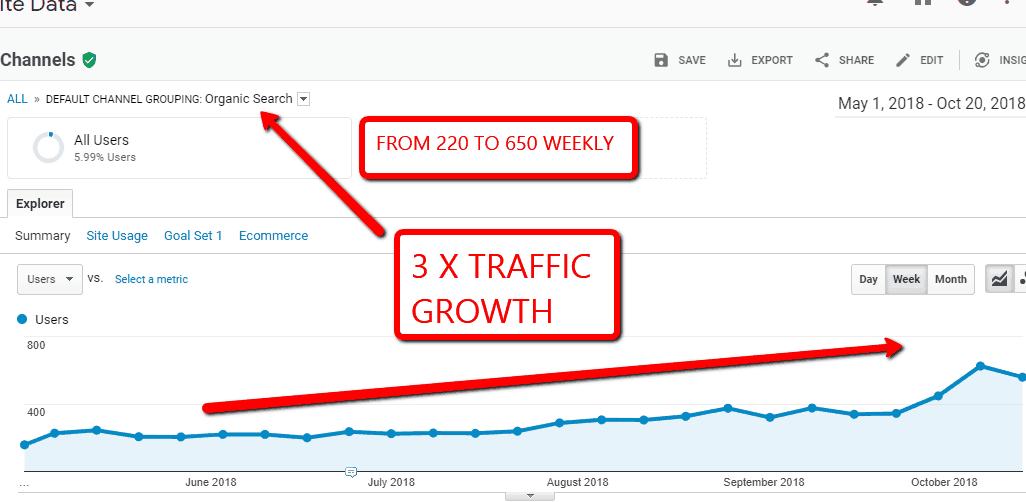
Focus on comparing the figures to previous timelines.
Moreover, rates are way easier to monitor than a huge five or six-digit figure. There’s no point in doing complex mathematics to report the number of page views you got last week.
Select a Period to Analyze
Marketing Metrics should be stable and measurable.
Since it’s wiser to analyze growth and rates over the totals, you ought to choose a particular time window for measurement.
Most companies go with weekly and monthly KPIs as they provide a strong and stable rate for comparison with other periods.
If you choose a very small time period, stability becomes an issue. The figure isn’t a comparable number then.
However, if your time period is too long, you will lose rhythm and timing and will fail to take the necessary action to improve.
Set Achievable and Realistic Goals
Solid marketing metrics can help define realistic goals.
Measurable and stable metrics help establish meaningful goals and actions.
They give valuable parameters to create a realistic projection regarding when and how a goal can be achieved.
Types of Marketing Metrics
Marketing departments often operate across several channels.
Social media, email marketing, and SEO are a few channels.
With so many channels, it’s vital that you track the right metrics relevant to any particular channel.
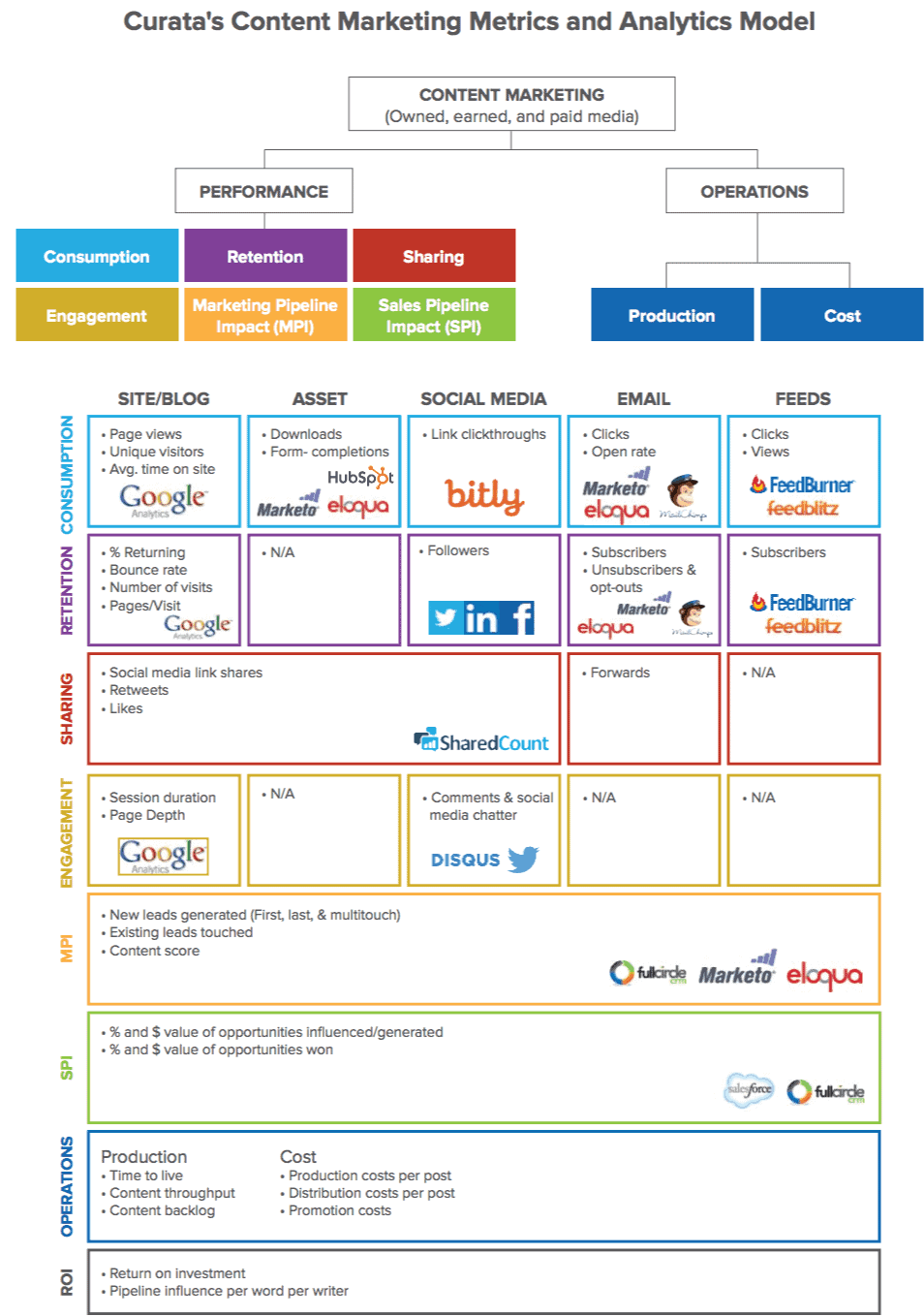
Here are the major types of marketing metrics, along with a few examples:
- Digital Marketing Metrics
- Return on Marketing Investment (ROI)
- Total Visits
- Customer Acquisition Cost (CAC)
- Average Time on Page
- Unique Visitors
- SEO Metrics
- Pageviews
- Landing Page Performance Optimization
- Top Viewed Posts
- SEO Keyword Ranking
- Domain Authority
- Social Media Marketing Metrics
- Twitter Engagement Metrics
- Facebook Engagement Metrics
- Social Traffic and Conversions
- Email Marketing Metrics
- Email Forwards
- Unsubscribes
- Email Marketing Engagement Score
16 Marketing Metrics to Track for Your Small Business to Boom
- 1. Revenue Growth
- 2. CAC (Customer Acquisition Costs) and Cost Per Lead
- 3. Customer Lifetime Value
- 4. ROI (Return on Investment)
- 5. Traffic to Lead Ratio – Conversion Rates
- 6. Lead to Customer Ratio
- 7. Customer Retention Rate
- 8. Landing Page Conversion Rates
- 9. Bounce Rate
- 10. Net Promoter Score
- 11. Monthly Recurring Income
- 12. Organic Traffic
- 13. Social Media Metrics
- 14. Mobile Metrics
- 15. Average Time Spent on Site
- 16. Email Marketing Metrics
1. Revenue Growth
How much growth has the new marketing campaign brought your organization in terms of revenue?
Understanding revenue growth is vital to discovering the effectiveness of your marketing campaigns. Nobody wants to spend money for nothing.
If you spend money and can’t make money, you are going wrong somewhere.
If you have identified a particular “low performing” campaign, you could move that money to some other marketing efforts.
There are two types of marketing campaigns: Inbound and Outbound.
Inbound marketing campaigns are when customers stumble upon your product or service when they need you.
Outbound marketing campaigns, on the other hand, are a tad different.
They refer to marketing efforts of initiating a conversation and circulating it’s the message to an audience.
You could consider the revenue growth of each marketing channel. Consequently, you will know which operations to kill or continue.
Tracking revenue growths help you justify your investments in specific successful channels. As a result, you reroute funds from poor performers to more valuable campaigns.
Reach out to the right audience at the right time with the help of a good inbound marketing software, backed by great strategy.
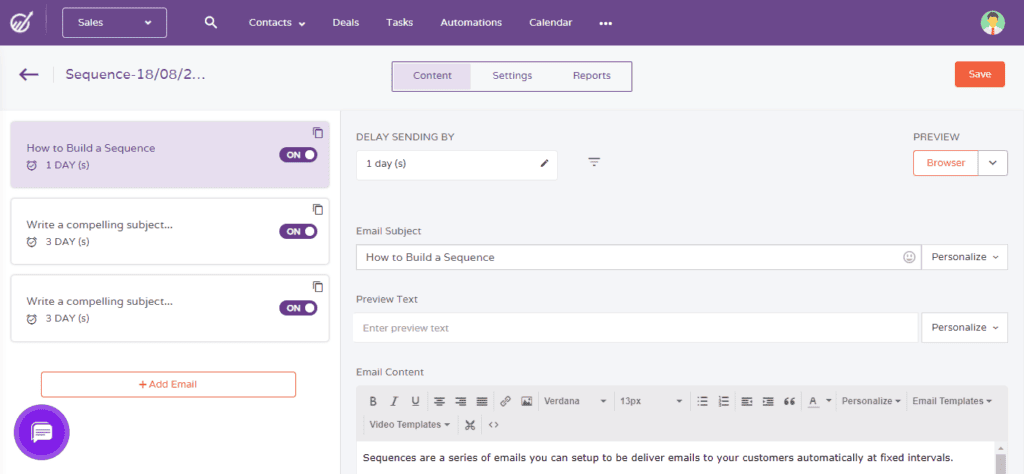
2. CAC (Customer Acquisition Costs) and Cost Per Lead
The CAC (Customer Acquisition Costs) is an important marketing metric for both inbound and outbound marketing campaigns.
The CAC essentially tells you how much you spend to acquire a customer.
Here are some associated costs for calculating the CAC:
Inbound marketing campaigns:
- Software and technology
- Other general overheads
Outbound marketing campaigns:
- Marketing distribution
- Sales and marketing workforce
- Advertising
- Other general overheads
If your organization is majorly trying out inbound marketing, you could subdivide the efforts further by campaign types.
Now, you can assess the effectiveness and profitability of each activity. As a result, you can judiciously implement the most useful ideas.
Here’s another way of looking at the CAC:
CAC is the full cost for the acquisition of an average customer.
You can compute this by taking the new gross margin from a quarter and subtracting the marketing expenses and sales from the previous quarter.
The assumption made here is that new revenue from marketing and sales isn’t realized until roughly three months later (duration of customer ramp-up).
The CAC is vital in indicating how long it takes a company to recover customer acquisition investments.
Consequently, the company makes better decisions regarding additional investments in marketing and sales.
The cost per lead is the average money you spend on capturing leads.
Glance through this attractive cost per lead calculation.

3. Customer Lifetime Value
In the case of inbound marketing, you can measure customer value by reaching out to current customers.
This helps you stay in contact with leads and also helps reduce churn rate (situations when customers no longer subscribe to your services).
Additionally, you can keep your customers satisfied and boost your customer lifetime value.

Here’s a simple customer lifetime value calculation:
(Avg sale per customer) x (Average frequency of purchases made by the customer) x (Avg retention time in years or months for the typical customer)
HubSpot churned out this great blog post drilling deeper into customer lifetime value calculations.
An excellent way to heighten your customers’ lifetime values is developing campaigns focused on lead nurturing – reaching out to existing customers.
En route to calculating the customer lifetime value, you will realize how often and how much customers buy.
Moreover, you will also figure out how long they will remain as customers.
Another benefit is that you get to identify at what point do certain customers rail off.
For instance, if you notice that customers derail after engaging in one-off buys, you need to ramp up your post-purchase nurturing.
The customer lifetime value helps determine the overall economic value customers bring to your business.
This metric also helps identify potential value from long-term marketing channels.
4. ROI (Return on Investment)
Every marketing effort comes with a cost.
Computing your ROI on these costs helps determine the effectiveness of your marketing activities.
You don’t want to pump funds into something that isn’t working.
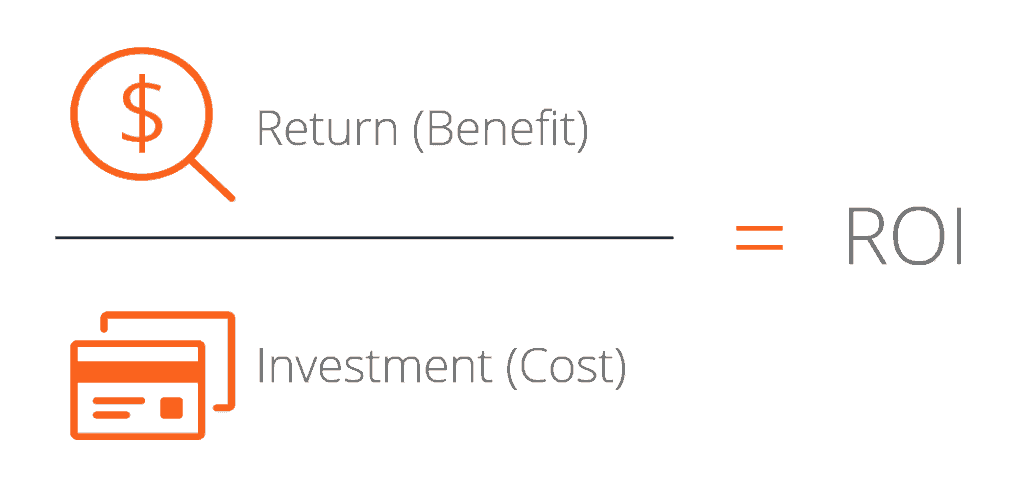
Here’s a simple formula to calculate ROI on any marketing activity:
[(Sales Growth – Investment) / Investment] * 100= ROI
The investments, in this case, are anything marketing related.
For instance, consider a company invests $10,000 into Google Adwords and realizes a net profit of $20,000. This translates to a 100% ROI.
The 100% ROI essentially tells you that the investment has helped realize an equivalent 2x profit.
ROI helps calculate the value and effectiveness of an investment. It displays the loss or gain of investments.
You can compare the ROI of each marketing campaign and choose to redirect your efforts to those with higher rates of ROI.
There are various applications for ROI. For example, a company may use ROI to evaluate stock returns.
Another company could use ROI to make crucial decisions regarding extra SEO or PPC fund allocations.
5. Traffic to Lead Ratio – Conversion Rates
Analyzing your website traffic by tracking the source channels is vital.
How much % of your traffic is organic, social media harnessed, referral based, or direct?
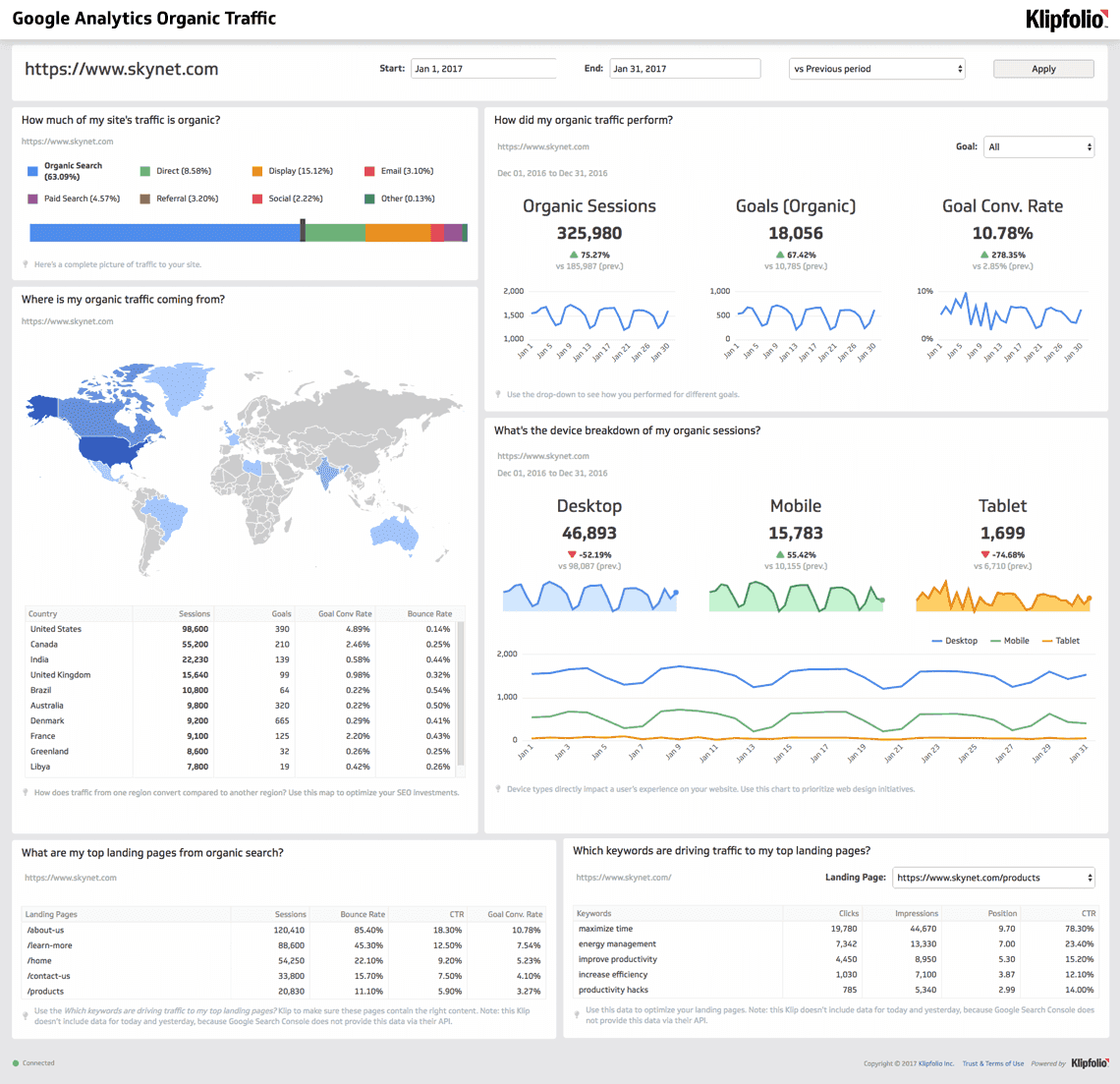
Additionally, figure out what your visitors do upon arriving and how they get converted into leads and customers.

Try to test the entire traffic to lead conversion process and look for loopholes or weak spots. Can you make the content on your landing page more catchy?
Furthermore, you could define your (MQLs) marketing qualified leads, and (SQLs) sales-qualified leads.
MQLs refer to leads who have indicated interest in your brand’s offerings based on your marketing efforts. In other words, such leads are more likely to become customers.
SQLs refer to prospects hunted by marketing but are yet to developed upon by the sales.
After an initial nudge from marketing, sales keep the ball rolling by exploring the prospects’ capability and interest to purchase.
These leads are believed to be “sale ready” based on their lead score or specific interactions (like filling out some extra fields on your page)
If you witness elevated rates of traffic but a poor traffic-to-lead ratio, something is missing or wrong on your page.
Try out something new to optimize your conversion rate. Subtle changes like a new design, form, or text go a long way.
Calculating conversion rates is a walk in the park.
[ (Total number of leads) / (Total number of visitors) ] * 100
Track engagement and identify your most qualified leads, and know who to follow up with.
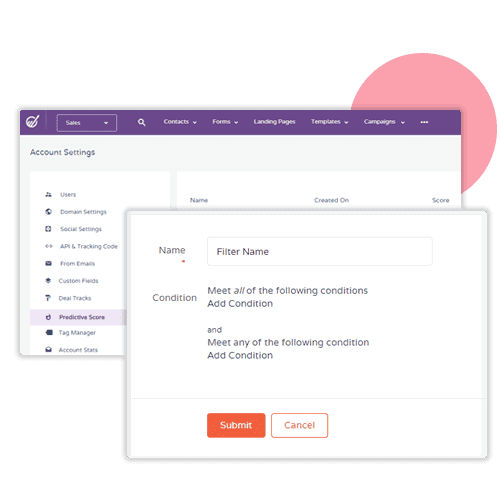
6. Lead to Customer Ratio
Okay, so you have tons of visitors and a good number of leads. It’s time to crunch more numbers now.
It’s vital to figure out the number of leads closed by your sales team.
For this, you will have to compute the ratios of sales accepted lead conversion rate and sales qualified lead conversion rate.
Sales accepted leads are just opportunities that have either been contacted or not.
Considering the two ratios, ponder on these questions:
- Are my campaigns capturing leads?
- Is our CRM effectively passing qualified leads over to sales?
- Do we have good closing rates?
If you answered “NO” to any of the questions, brainstorm with your sales team and identify missing pieces of the puzzle.
Look for ways to collaborate and pump up the numbers.
The lead to customer ratio helps identify flaws in your sales process. Consequently, if you can fix them, the numbers will soar.
7. Customer Retention Rate
Calculating the customer retention rate helps put a number on the loyalty of your customers.
Acquisition costs are generally higher than retention costs. Thus, figuring out your retention rates is vital.
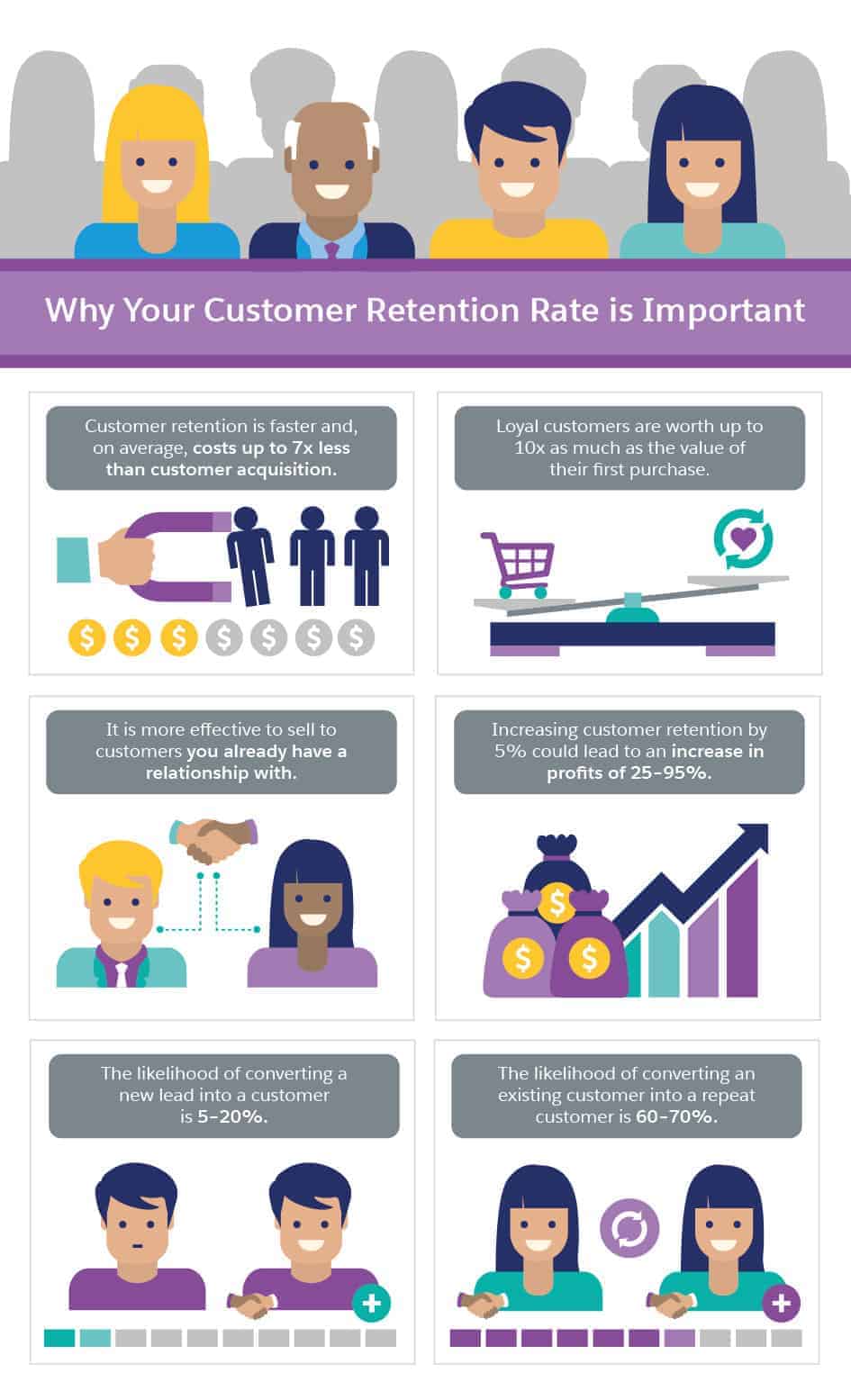
Moreover, if you can find ways to encourage customers to stick around with your business longer, the revenue will only go up.
For instance, consider that you begin a quarter with 35 customers and add 15 new customers.
However, you also lose 8 customers. The net would be 35+15-8=42 customers.
Applying the following formula will reveal that your customer retention rate is 77.14%.
Customer Retention Rate = (Customers at the end of a period – New customers gained in this period) / (Customers at the beginning of period) *100
You shouldn’t consider the new customers at a period’s end and divide that figure by the total number of customers you began with.
Multiply this value by 100 to get a percentage value.
8. Landing Page Conversion Rates
A landing page is essentially any page that receives traffic from sources that aren’t pages on your website.

Landing pages are mostly associated with PPC (pay-per-click) ads similar to Google Adwords.
Such ads help you drive traffic to a particular URL that’s been optimized to deal with visitors.
It’s a page where people land and you must escort them well to convert them.
Traffic and leads are two completely separate entities.
Unless your landing page converts and coughs up leads, all that traffic is just like traffic – annoying.
It’s vital that you monitor your landing page conversion rates. Figure out new ways to improve your conversion rates.
There’s a myriad of elements that you could change on the landing page to ramp up your numbers.
The best way to go about this is A/B testing certain changes and sticking with those that convert the highest.
Here’s a list of things you could change on the landing page:
- Change the CTA color
- Make the CTA text more valuable and convincing
- Write better copy that gets to the point fast and leaves an impact
- Include social proof like reviews, testimonials, social counts, etc.
- Consider the relevance of offers
- Change the colors of your actionable buttons (maybe make the download button more visible and vibrant)
Build responsive landing pages using the easiest drag and drop designer from EngageBay.

9. Bounce Rate
The bounce rate gives you valuable information on how engaging your website is.
To bounce from a website means exiting navigation without any interaction.

Curious about your website’s bounce rate? Check us out to learn bounce rate measurements and so many more easy tricks.
Interactions could range from commenting or clicking on links to other pages on your website.
Visitors who “bounce” don’t navigate to other subsequent pages of your site. Monitoring the bounce rate helps you identify the effectiveness of your design and content.
Here’s a simple formula to calculate bounce rate:
(Visitors exiting the site after visiting just one page/ Total number of site visitors) * 100
As a general rule, a bounce rate in the ballpark of 26 – 40 % is fantastic! 41-55% is around average. Any rates above 70% require a marketing prep talk ASAP.
However, if you run blogs or news websites, a bounce rate exceeding 70% is tolerable as well.
SEMrush researched and concluded that the bounce rate holds the 4th most important SERPs (Search Engine Result Pages) ranking factor.

5 Steps to Reduce Bounce Rate
-
-
- Improve content
- Write engaging and persuasive copy
- Improve the relevancy of content
- Stick to a particular niche
- Improve readability
- Use bullets, small paragraphs, smaller sentences, and leave room for white space
- Avoid the usage of popups
- Write concise and well-targeted meta descriptions
- Improve content
-
10. Net Promoter Score
The NPS (Net Promoter Score) is a say-it-all marketing metric that tells you whether your customers would recommend your company to family and friends.
If that figure is high or at least increasing, your company is doing well.
NPS arises from a successful word of mouth and helps multiply the fruits of your marketing efforts.
NPS measures customer experience. As a result, you can predict business growth.
Gain answers to crucial questions like, “On a scale from 1-10, how likely are you to recommend a [company] to a colleague or friend?”
Based on the responses, you can categorize the respondents into:
Promoters (averaging a score of 9-10) are loyal customers who will continue subscribing/buying to/from your company and refer others, thus fueling growth.
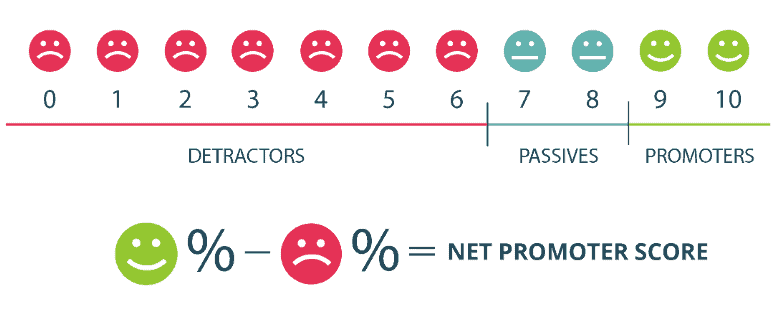
Passives (averaging 7-8) are unenthusiastic, yet satisfied customers who might change their minds when subjected to competitive offerings.
Detractors (averaging 0-6) are just unhappy customers who could damage your reputation and hinder growth via negative word-of-mouth.
Now, you will have to subtract the Detractors % from Promoters % to get the NPS, which can bear both negative and positive values.
11. Monthly Recurring Income
Take EngageBay, for example. We are a SaaS (software as a service) business, and the recurring revenue rate is a crucial marketing metric for us.
Competing in a recurring model, it’s vital that we grow this every month.
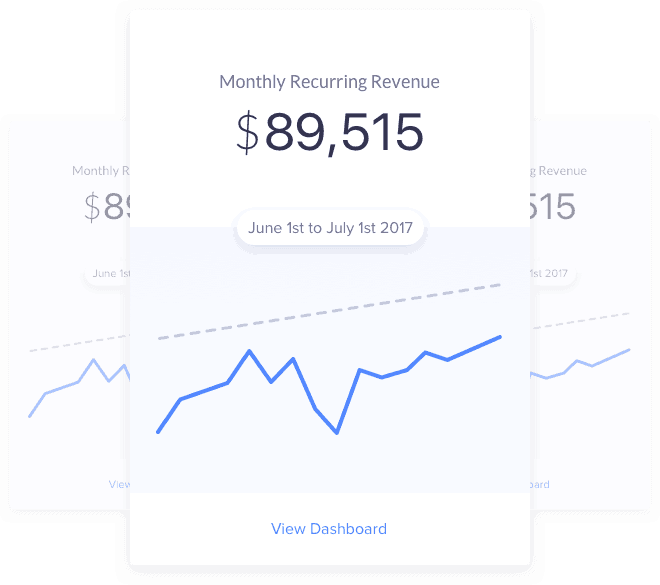
In a nutshell, the MRR (monthly recurring revenue) is income that a company can almost count on always – a predictable source of revenue.
Consistency is what MRR is all about.
Here’s how you can compute the monthly recurring revenue:
(Total number of paying users) * (average revenue per user)
The monthly recurring revenue is a key marketing metric for any subscription-based business, where customers are the center.
If you’re interested in learning how to calculate MRR growth, check out this comprehensive guide.
12. Organic Traffic
The ultimate goal of any inbound marketing campaign is to boost organic traffic.
Organic traffic refers to visitors landing on your website on their own. They search for specific products or services and click on your link.

Organic traffic is the complete opposite of paid traffic, which drives traffic from paid ads.
Organic visitors find your websites on search engines and aren’t “referred” by any other sources.
Huge organic traffic translates to reduced marketing costs of having to attract visitors to your brand.
It’s an absolute no brainer that the organic traffic directly relates to your SEO strategy. So, ensure that you take SEO research seriously.
Define your keywords smartly and refine your SEO strategies.
Here are a few ways to drive more organic traffic to your website:
-
-
- Write quality content that adds value
- Use long tail keywords during your SEO research
- Long tail keywords tend to have lesser competition, thus ranking becomes easier
- Use internal links
- This keeps your visitors on your website longer, this increasing engagement and reducing bounce rate
- Always write relevant meta descriptions
-
Use the Yoast SEO plugin for WordPress to receive handy tips on improving your SEO.
13. Social Media Metrics
Several clients often undermine the essence of social media in inbound marketing campaigns.
However, over the years, social media has been an invaluable contributor to overall better marketing.
Here are some metrics to track the impact social media has on your marketing efforts:
- Total number of lead gained from each social media platform
- Total number of customer gained from each social media platform
- Traffic percentage from each of the social media channels
There’s a ton of social media platforms like Twitter, LinkedIn, Google+, Facebook, Instagram, and many more.
Not surprisingly, staying consistent and efficiently using every platform is a cumbersome task.
However, if you can analyze each platform by analyzing certain key metrics, you will know where to redirect your efforts to gain better results.
As a result, you are more focused, and your conversion rates improve.
Many times, marketing teams focus only on one metric like followers or likes, and base success on these parameters. However, there are a few other prominent social media metrics like:
Reach: This tells your potential audience size. How many users or accounts have received your message?

Engagement: All sorts of engagement, including likes, retweets, shares, etc. tell you about how engaging your content is.

Influence: A huge follower base doesn’t necessarily qualify somebody as an influencer. To influence someone to do something, you have to be different.
14. Mobile Metrics
Mobile optimization is ultra-important, especially now in the 21st century.
Believe it or not, since 2011, daily media consumption on mobile internet grew by 504%!

The whole world is going mobile, so are you mobile?
Track these mobile metrics:
- Mobile Traffic
- Bounce rates on mobile devices
- Lead converts exclusively from mobile devices
- Conversion rates on landing pages optimized for mobile usage
Understanding how your visitors interact with your website from mobile devices can help you devise effective strategies to boost mobile conversions.
15. Average Time Spent on Site
Well, good traffic is one thing, and quality traffic is a whole different ball game.
If your bounce rates are low, and people find your content engaging and valuable, they will eventually surf longer on your website.
If you help visitors find what they need, and they will reward you with their time.

Here’s an insight into Google Analytics’ “Average Time on Page” Metric:
The actual formula is: Total time spent on the page by all visitors/ Total number of visitors
However, the calculation isn’t as straightforward as it seems.
Google Analytics measures this metric by calculating the difference between timestamps. If a bounce visit is recorded, there’s no timestamp.
Google Analytics also runs a secret stopwatch on any page regardless of whether you are viewing the page or watching cat videos on another tab.
Although the average time spent on site isn’t a direct indicator of success, a high value generally means you are doing things right.
You’re probably wondering what would be a good average time.
Also, don’t misunderstand the average time spent on site for the average session time.
16. Email Marketing Metrics
Despite having so many options, email remains one of the most effective digital marketing channels.
It generates the highest ROI for marketers.
For every $1 spent, email helps generate $38 in ROI.
But how do you calculate that?
There are various email marketing metrics that you need to keep track of to determine email effectiveness.
Web Me Tools have shared 10+ Best Email Marketing Free Trials to test and use Popular Email Marketing Tools at free of cost with their all features.
Open Rate: It is the percentage of the number of people who have actually opened your email in the box. It is calculated by:
(Total number of people opened/Total number of emails sent)*100
This shows how compelling and catchy your subject line is for the recipient to open it.
Click Rate: It is the percentage of people who click a link in an email. The formula is pretty simple:
(Total number of people clicked/Total number of emails sent)*100
Bounce Rate: It is the percentage of the number of emails that couldn’t be delivered.
(Total number of bounced emails/Total number of emails sent)*100
Forwards: It is simply the number of times an email was forwarded to another user.
Engagement: Engagement is simply measuring different actions taken on your emails, such as opens and clicks.
Traffic: This is an important metric as it shows how much traffic it drove to your landing page mentioned in the email.
With a simple drag and drop interface, create email templates that suit your business needs.
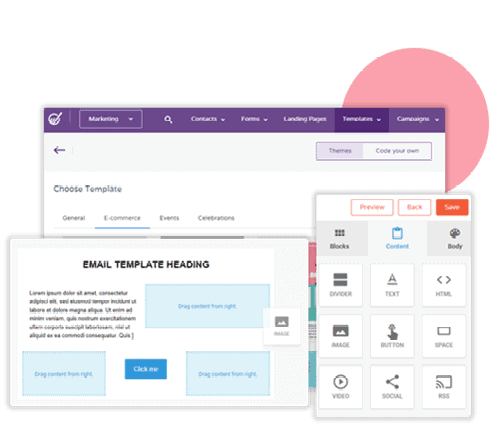
Conclusion
Marketing metrics are more than just everyday statistics.
They possess invaluable information that you can harness to grow and outsmart your competition.
All the metrics discussed have one common goal: Open your eyes to what’s happening and help provide a newer and better course of action.
Choose your metrics wisely and try to tweak a few elements to develop your perfect recipe.
Which of the marketing metrics did you find the most fascinating?
Are there any other must-track marketing metrics we missed out on? Let us know in the comments section. We would love to hear from you.

